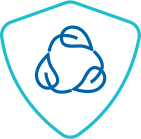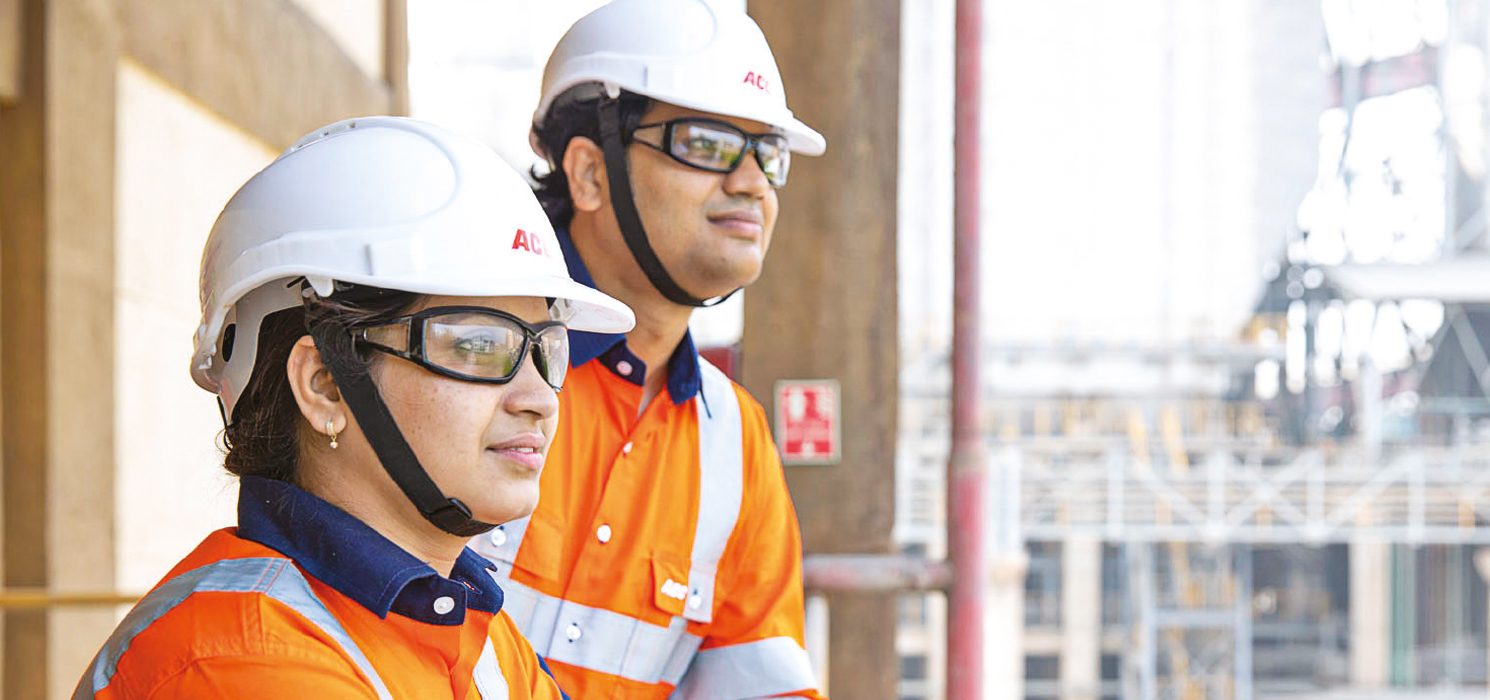Risk management
Dealing with
business risks
Our comprehensive Business Risk Management (BRM) framework helps us identify risks and opportunities and monitor their movement. The BRM thus helps us future-proof the business to the challenges of a dynamic business environment. We regularly review the effectiveness of our risk planning and mitigation efforts.
The BRM ranks each risk based on the likelihood of the event and its expected impact on our operations and performance to form a risk heat map. The risks that fall under the purview of ‘high likelihood’ and ‘high impact’ are identified as primary risks, which are factored into strategic decision-making by the Executive Committee and a detailed mitigation plan is drawn up. The identified risks are integrated into our planning cycle to periodically review the movement of the risks on the heat map and the effectiveness of the mitigation plan.
Board Risk Management Committee
The Risk Management Committee is constituted for overseeing risk management systems as well as risk governance. The Committee frames the Risk Management Policy, which is approved by the Board, and updates the Board regularly on risk management and governance. Through industry-best internal controls and systems, the Board oversees the risk management and governance process. Our internal control framework comprehensively covers financial, operational, compliance and information technology areas and is completely aligned with our risk management policy. Embedded within the business, robust risk management processes enable us to identify significant risks and mitigate them in an effective manner.
Key business risks and their mitigation plan
Primary risks
 Inability to secure supply of materials at a competitive price
Inability to secure supply of materials at a competitive price
Our endeavours
Fuel
Coal and pet coke are the primary fuels used in our kilns to produce clinker, and in power plants to generate electricity. Fuel contributes to a major share of the cost of cement. The post-pandemic global energy crisis has led to severe shortage in coal and sharp increase in coal and petcoke prices.
We have initiated alternative sourcing and consumption of alternative fuel to address availability, cost and sustainability targets. We are focusing on reducing the cost of power and fuel by availing of domestic and import options, working on fuel flexibility while adopting more sustainable and efficient modes of transport. We are also optimising operational efficiency and controlling the heat rate of kilns.
Fly ash
Global demand of fly ash and slag has surged on account of capacity expansion undertaken by cement producers. This has increased pressure on supply and led to high prices.
We are using innovative techniques to transport and use fly ash from far-flung power plants to the deficit-geographies. We are using wet fly ash from nearby power plants’ dykes to address cost and availability concerns. Also, we are using phospho-gypsum and other non-mineral waste gypsum (40-100%) to reduce the total cost.
Limestone
A primary raw material for the manufacture of cement, it is imperative to ensure its uninterrupted and long-term availability. Environmental and forest and wildlife clearances are a prerequisite for mining activities. Besides, land acquisition is also becoming more challenging and expensive.
Most of our mining leases are till March 31, 2030, thereby ensuring adequate limestone reserves till the said date, after which we intend to participate in auctions. We are already participating in select auctions to secure new mining leases for our existing plants as well as for our expansion across locations. We ensure timely approvals through continuous engagement with government officials and local authorities. Adequate steps are also being taken to obtain fresh environmental clearances, wherever necessary. To optimise usage of this depleting natural resource, we are using a higher percentage of additives that enables usage of low-grade limestone without compromising on quality.

Market share and competition
The cement industry is witnessing an imbalance in installed capacity and its utilisation. Despite excess production, expansion programmes continue, resulting in intense competition and adverse impact on the Company’s market share, sales volume, and profitability.
We have drawn up strategies for channel development, increased focus on trade business and brand positioning to manage market shares and profitability.
We are widening our product portfolio by increasing the share of our premium products in the retail segment, application-based products, value- added products, and services to the B2B segment.

Cyber security
In the last few years, technology has evolved manifold and so have the risks attached to it. The proliferation of business data beyond data centres to the cloud, social media and digital platforms for B2B and B2C connect are impacting cyber security. In addition to data loss, cyber-attacks can impact business operations, machinery and human assets, and result in legal and regulatory liabilities.
Our business landscape with complex IT and Operational Technology (OT) environment, presents the possibility of a cyber-attack. Appropriate controls (technology and governance) are being planned and implemented. Adequate perimeter security is in place and business continuity plans are tested every year. The impact assessment of most of the hardware and software has been mapped and we are also conducting YoY cyber security maturity assessments.
We use tools such as End Point Threat Detection & Response (ETDR) solutions for advance threat protection, immutable back-up and encryption, multi-factor authentication for critical applications to protect against identity and password theft. Cyber-threat intelligence solutions have been integrated with Security Incident & Event Management (SIEM) at the Security Operations Centre (SOC) to track and prevent a potential attack.

Digital advancement
Digital technologies are changing the way companies operate while creating new opportunities to improe efficiencies and enhance customer engagement and experience and employee involvement. Adoption of such technologies require top management initiative, employee commitment and cultural transformation.
We have formulated a comprehensive digital advancement roadmap across our business value chain viz. manufacturing, logistics and supply chain, commercial, customer and channel, to enhance business efficiency, productivity, and overall success.

Legal and compliance risks
Since the Company’s business is dependent upon various approvals, consents, licences, permits and other such items, the Company is exposed to various legal, regulatory and litigation risks.
We have a robust compliance framework and mechanism for policies, Standard Operating Procedures (SOPs) and advisories in relation to statutory compliances and litigation/potential litigation. A statutory compliance portal is used to track location-wise compliance requirements and the responsibility matrix.
We regularly review key legal cases in terms of the demands involved, and the probability of receiving any adverse orders where there may be financial or reputational impact on the Company.
We engage legal counsel basis the nature of legal risk and strategy and use a Litigation Management Digital Tool that maintains a master litigation database to keep track of function-wise statutory compliances. We ensure compliance audits and remediation, training and awareness programmes and policy communication.

Health and Safety risk
The Company’s nature of business makes it imperative to protect employees, contractor and third party from injury, illness, or fatality, during both on-site and off-site activities. Any safety issues could result in legal action, financial loss, and reputational damage.
We ensure employee safety through numerous measures, including regular third party plant inspection and Design Safety & Construction Quality Programme (DSCQP) surveys, the Transport Analytic Center (TAC) to track parameters of vehicle health, ensure road safety, apart from assessments on Driver Management Centre (DMC) efficiency. In addition, we have a robust assurance process with three layered audit mechanisms: intra ACC, cross audit by Ambuja Cements and group audit by Holcim that helps in assurance of Health, Safety and Environment Management System (HSEMS) protocol.

Talent retention and attraction
Workforce management is crucial to businesses to ensure adequate manning, employee satisfaction, staff retention and employee productivity. High attrition rates would result in increased cost of recruitment and trainings, understaffing and lower productivity.
We mitigate the risk of employee attrition through increased engagement, ensuring employee satisfaction and undertaking well-being surveys while aligning our business goals with individual employee aspirations. We undertake succession planning programmes and promote employee development through a well-laid out learning and development programme through the Holcim Training Academy.

Environmental risks
The cement Industry is a major contributor to global CO2 emissions due to calcination of materials and use of traditional fuels. Organisations must aim to meet the increasingly stringent greenhouse gas (GHG) emission targets and pollution control board standards. Non-compliance would result in financial penalties and disruption in plant operations. Also, continued water extraction for plant operations could result in water scarcity/decline in ground water tables and create adverse global warming impact.
We are committed to Net Zero carbon emission and are making efforts to increase green energy consumption. We are improving our Waste Heat Recovery System (WHRS) capacity, optimising sourcing of alternative fuel through Geocycle, developing products which have low-carbon footprint, reducing clinker factor and using alternative raw materials. We are also promoting rainwater harvesting in our mines, together with focused reduction in specific water consumption through process optimisation. We are adopting new technologies, eliminating leakage, adopting air-cooled condensers in CPP and reusing treated water.

Emerging risks
Our endeavours

COVID-19 pandemic and/or outbreak
of any new disease
The COVID-19 pandemic and measures implemented by the authorities to contain it have created new challenges. The pandemic also presented primary risks to the health of employees and their families while impacting business, logistics and supply of contract workforce.
We created a Business Resilience Team (BRT) for monitoring the situation and adhered to all applicable protocols. Health & Safety monitoring was done at all plants. We vaccinated 100% of our employees, their families as well as drivers who service our distribution networks.

Climate change risks
Aligning with TCFD recommendations, ACC has assessed the potential impact of climate-related risks and opportunities which are factored into the Company-level risk management process. These risks include transition risks and physical risks.
Transition risks
Policy and regulatory changes with respect to PAT/RPO regulations, and stringent environment regulations.
Market risks due to change in consumer preferences and demand for sustainable products.
Reputational risks due to the stakeholders’ perception towards the sector as one of the biggest CO2 emitters.
Technological risks due to the high cost.
Physical risks
Climate change may result in extreme weather events like flooding, changes in precipitation patterns etc. These may impact our operations due to disruptions in supply chain and logistics. Water scarcity (chronic risks) may also affect our operations in the future.
Our mitigation efforts on these specific matters are described in the relevant sections of this Integrated Report. We have a Board-level CSR and Sustainability Committee to oversee governance mechanisms, strategise our efforts and monitor our progress against climate change and its attendant problems. We have formulated SD 2030 Plan with targets to reduce climate change impact that are validated by Science Based Targets initiative (SBTi). This year, we also undertook the Net Zero pledge.
Metrics
Specific CO2 emission is seen as a metric to monitor climate change and its impact. Disclosure of this indicator for the last four years along with detailed disclosure on Scope1, Scope2 and Scope3 emission is provided in page 41. Further, being one of the key sustainability indicator, water consumption is also monitored regularly.

Climate change opportunities
In the process, we have also identified the opportunities which include achieving resource efficiency, optimising our energy resources, developing sustainable and low carbon products etc.
We are installing Waste Heat Recovery Systems (WHRS) and increasingly using renewable energy at our plants. We are also undertaking other measures, including the adoption of advanced technologies, to improve our energy efficiency, clinker factor, and thermal substitution rate and using our innovation backbone to bring new products with low-carbon footprint to the market.